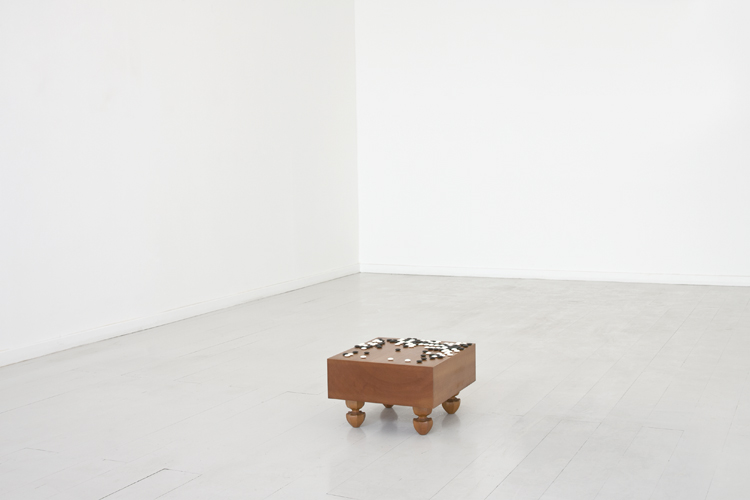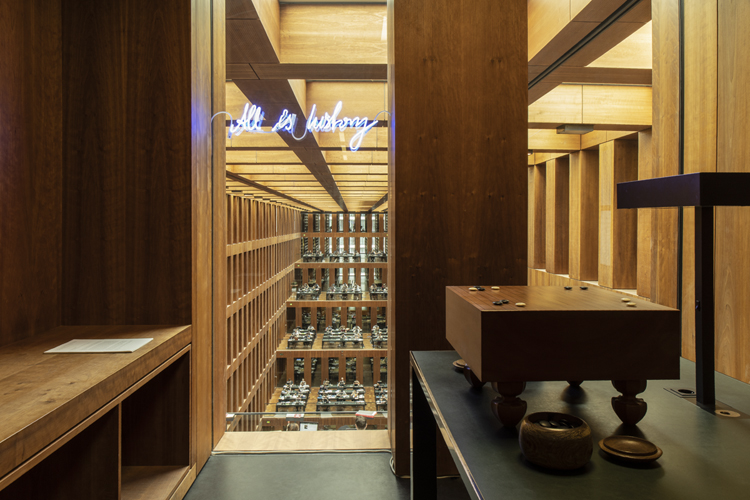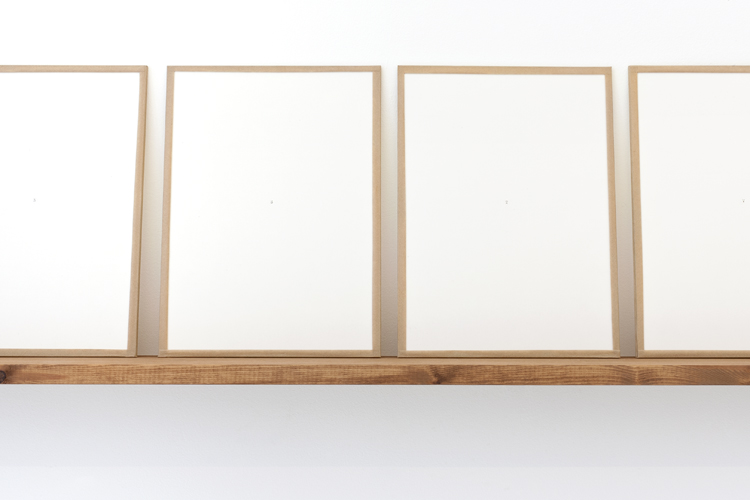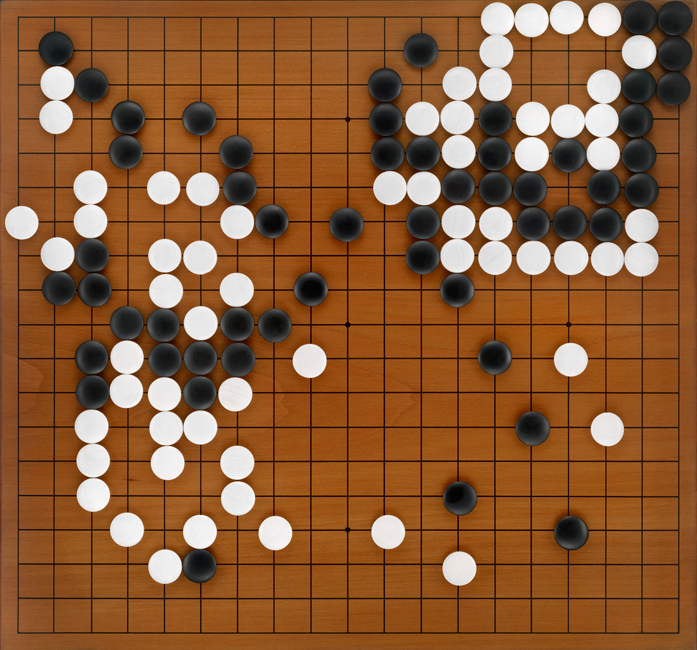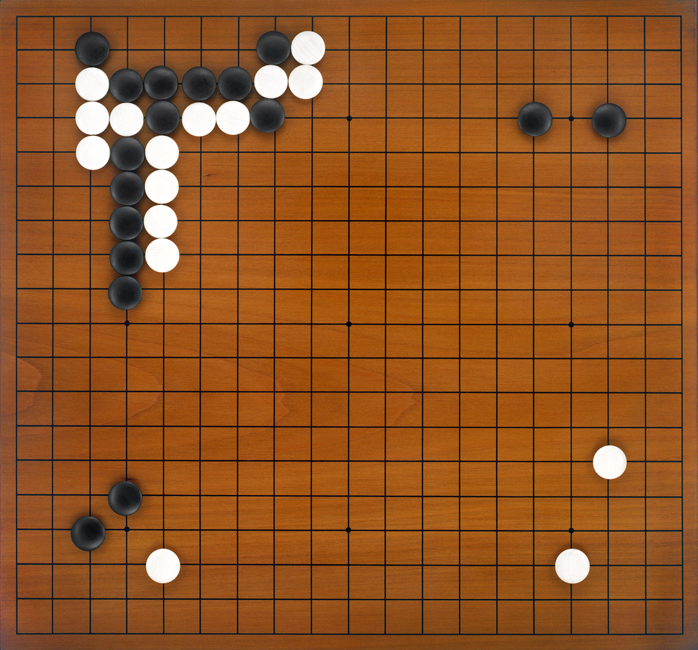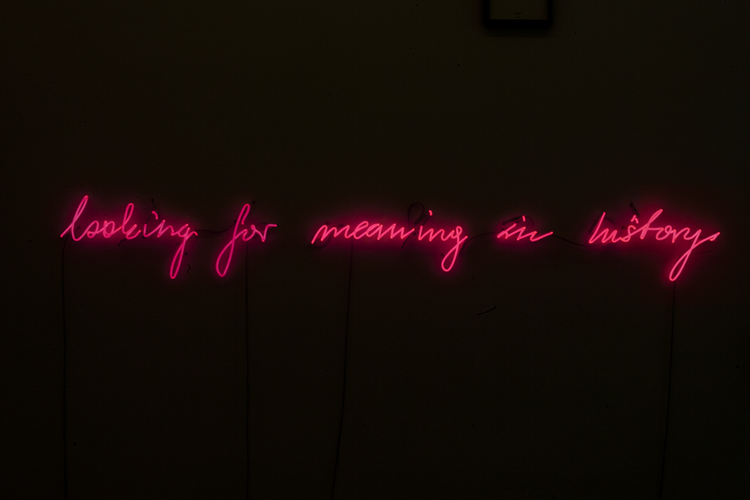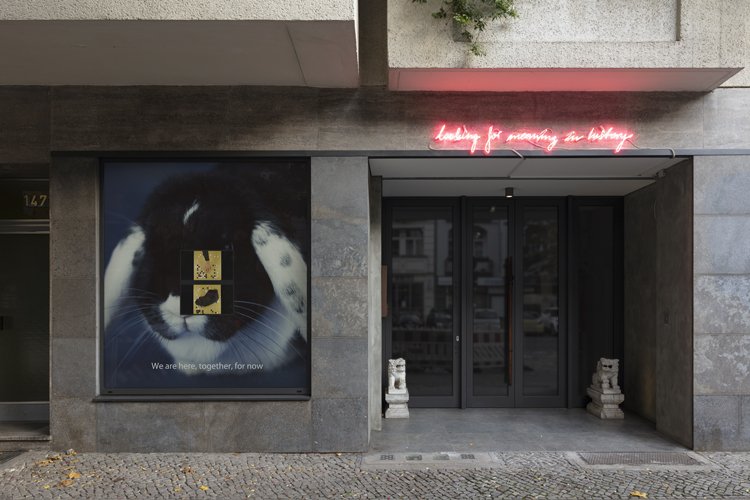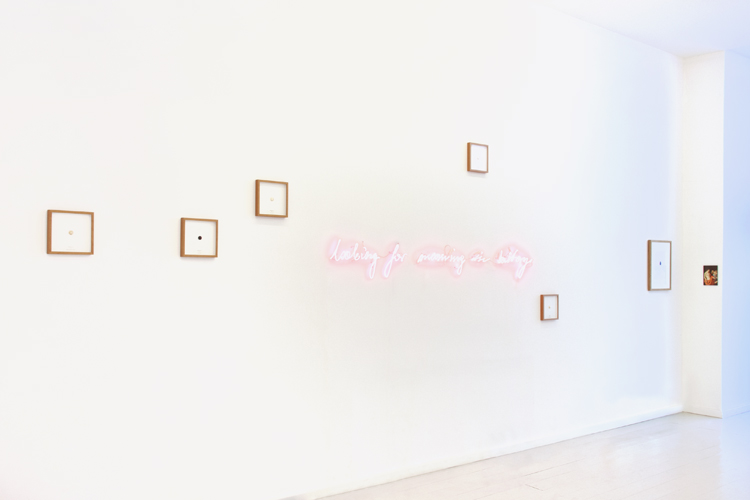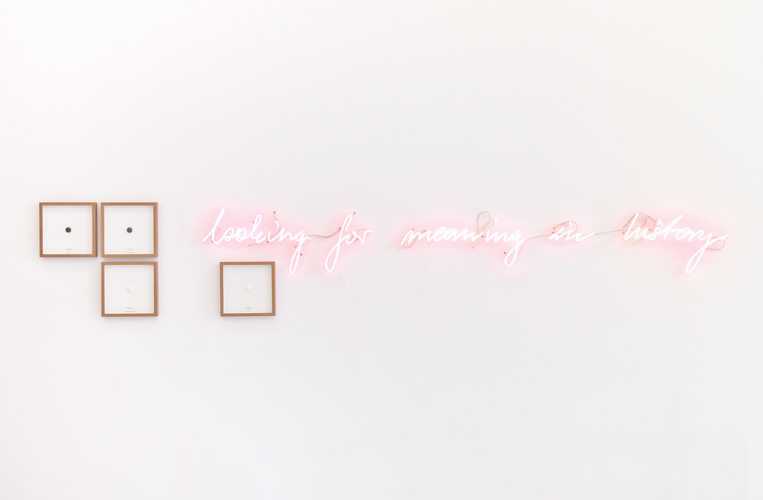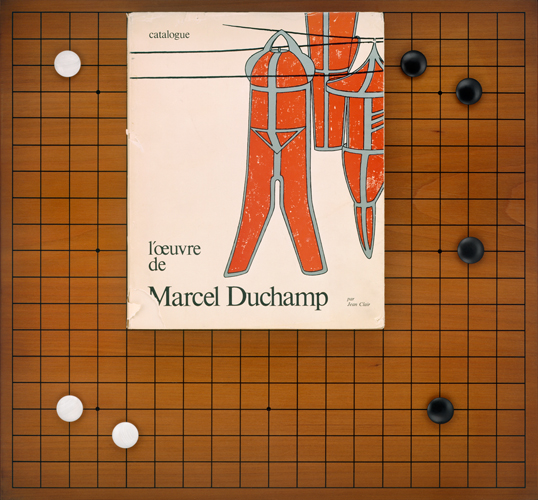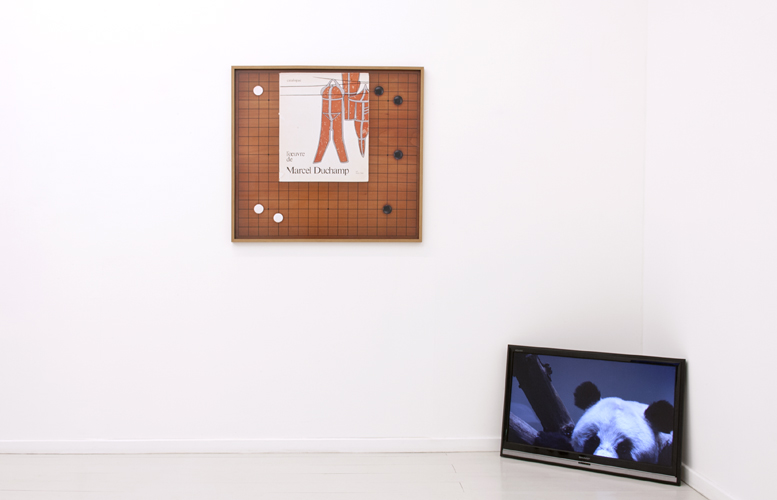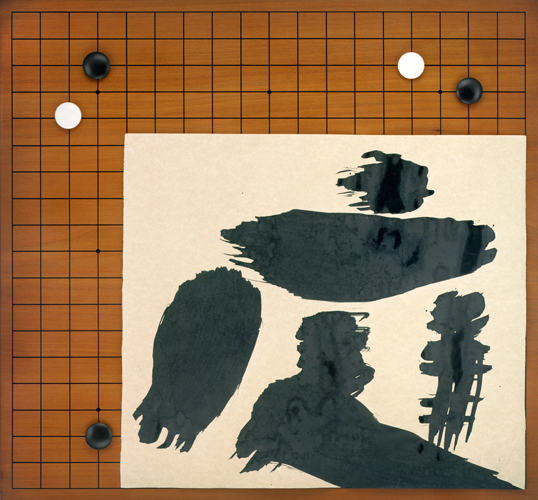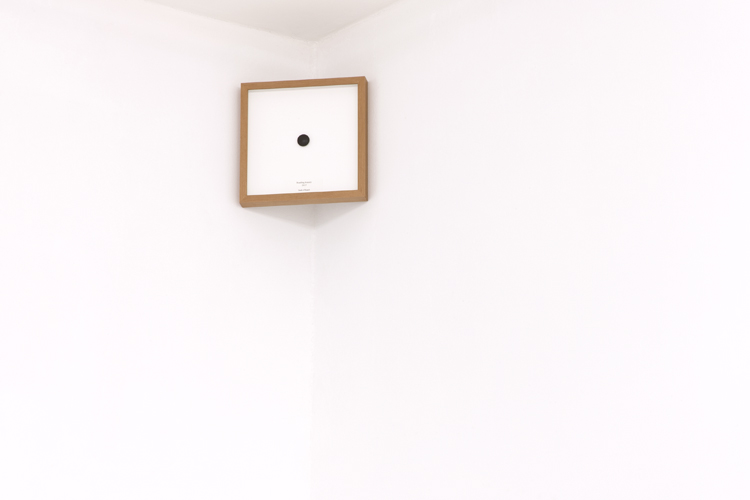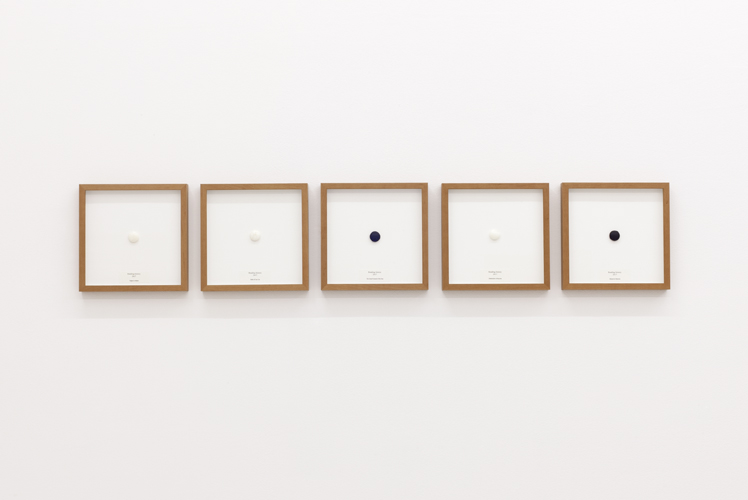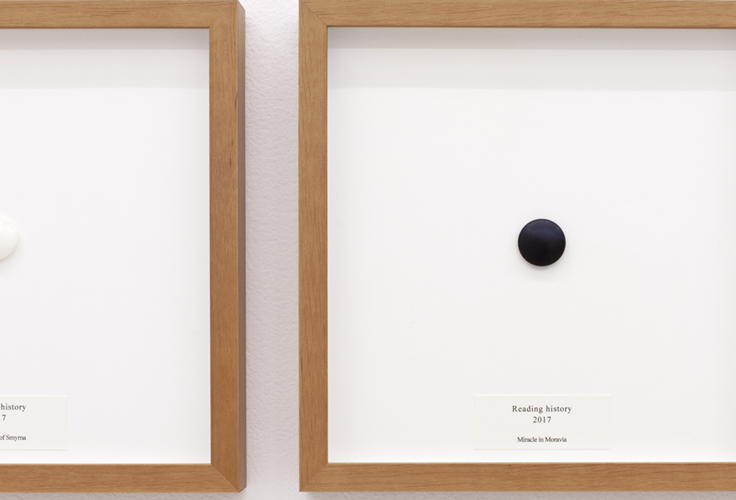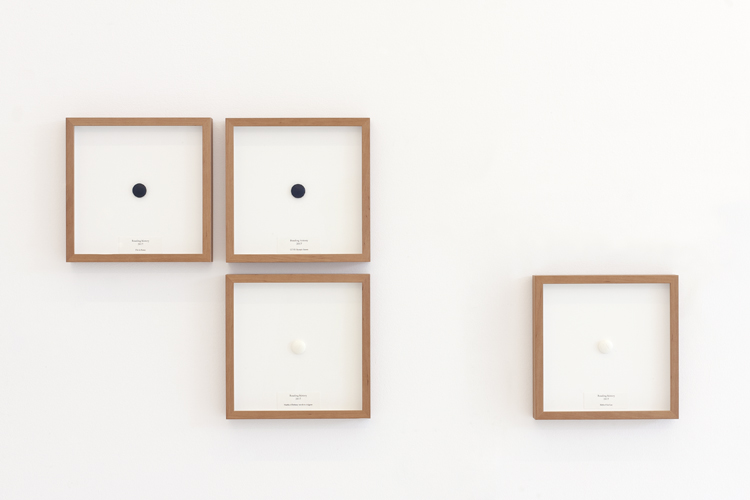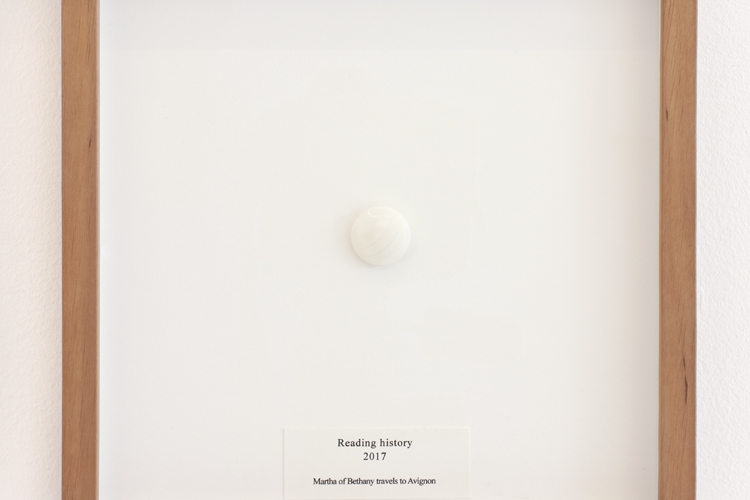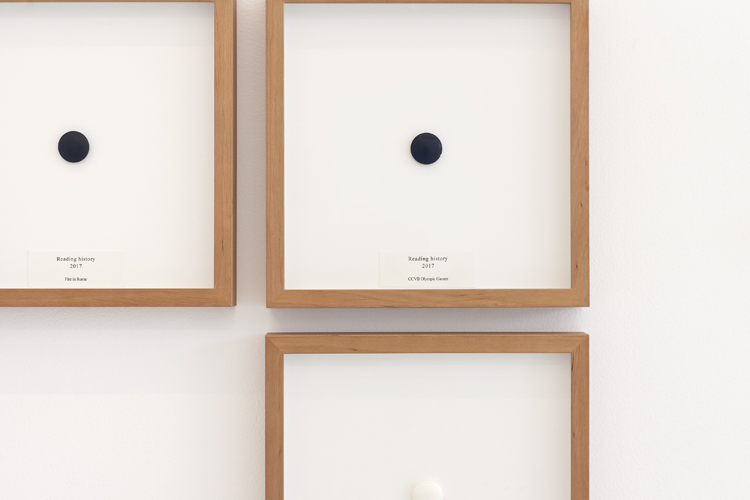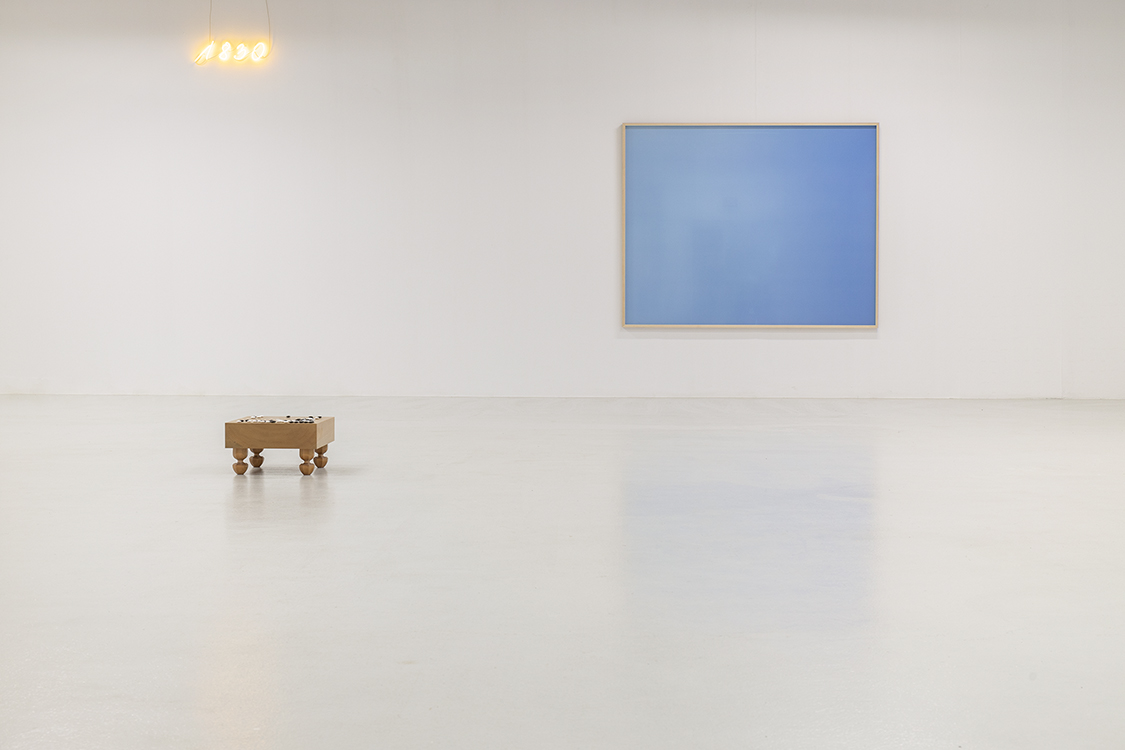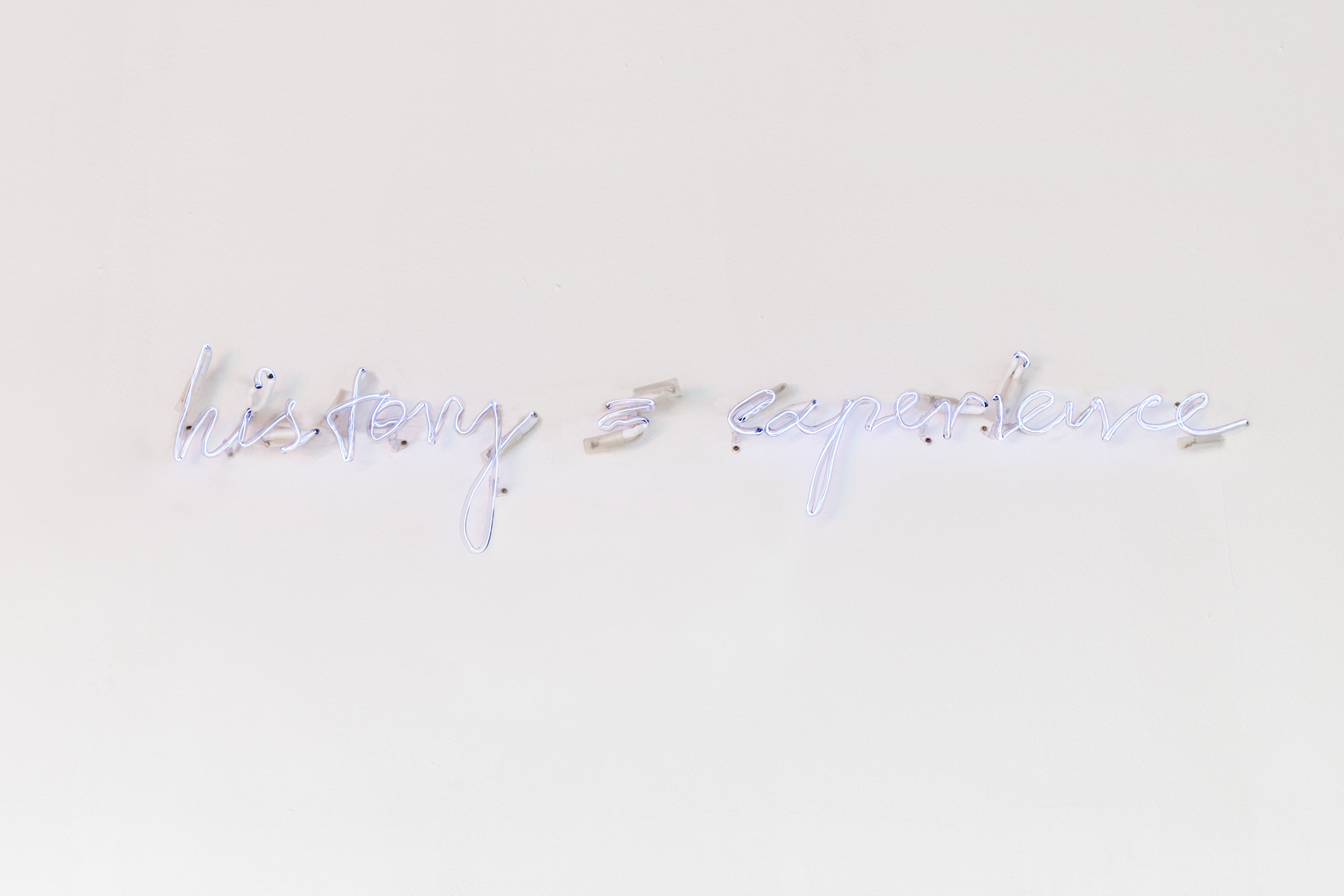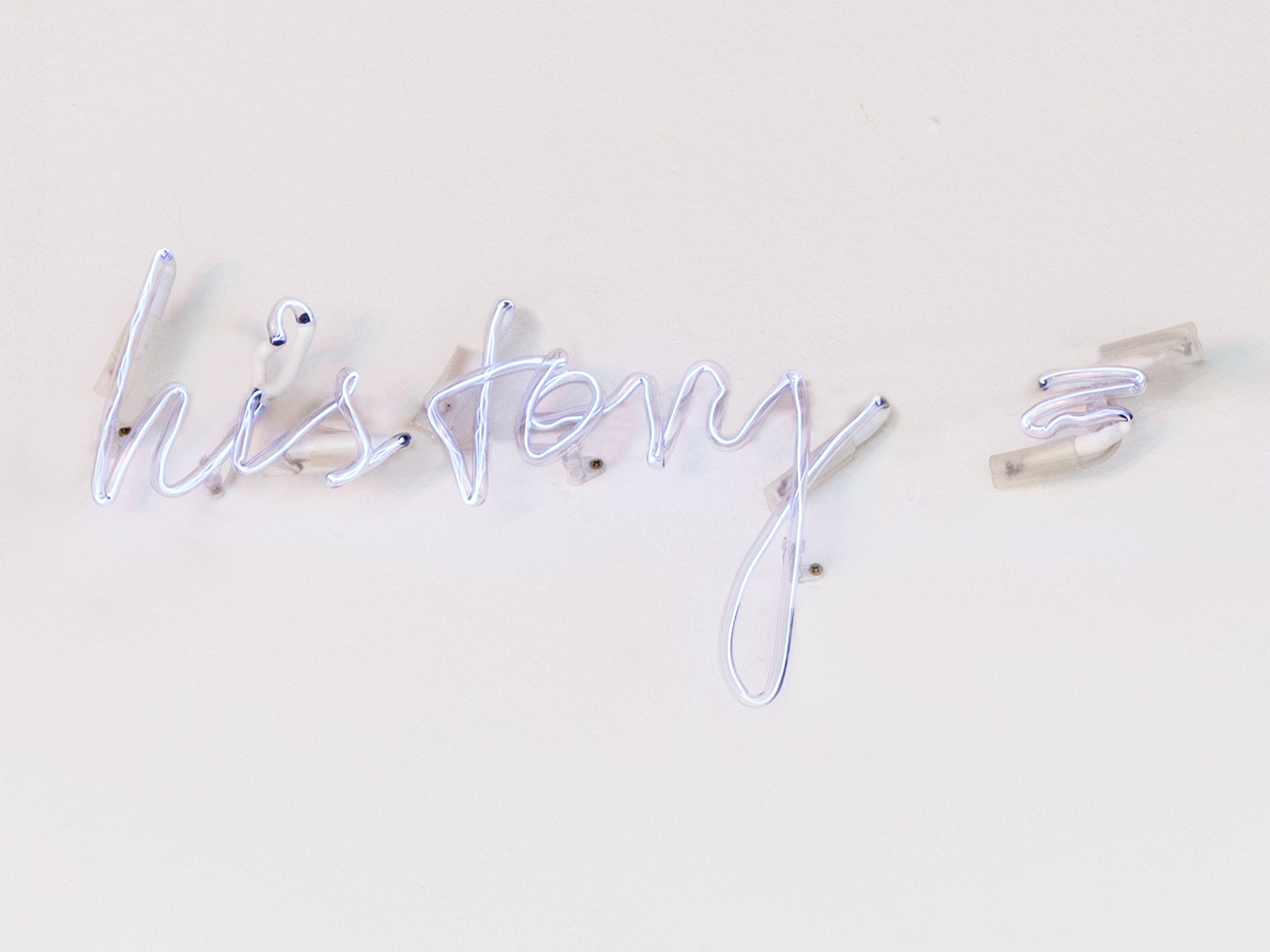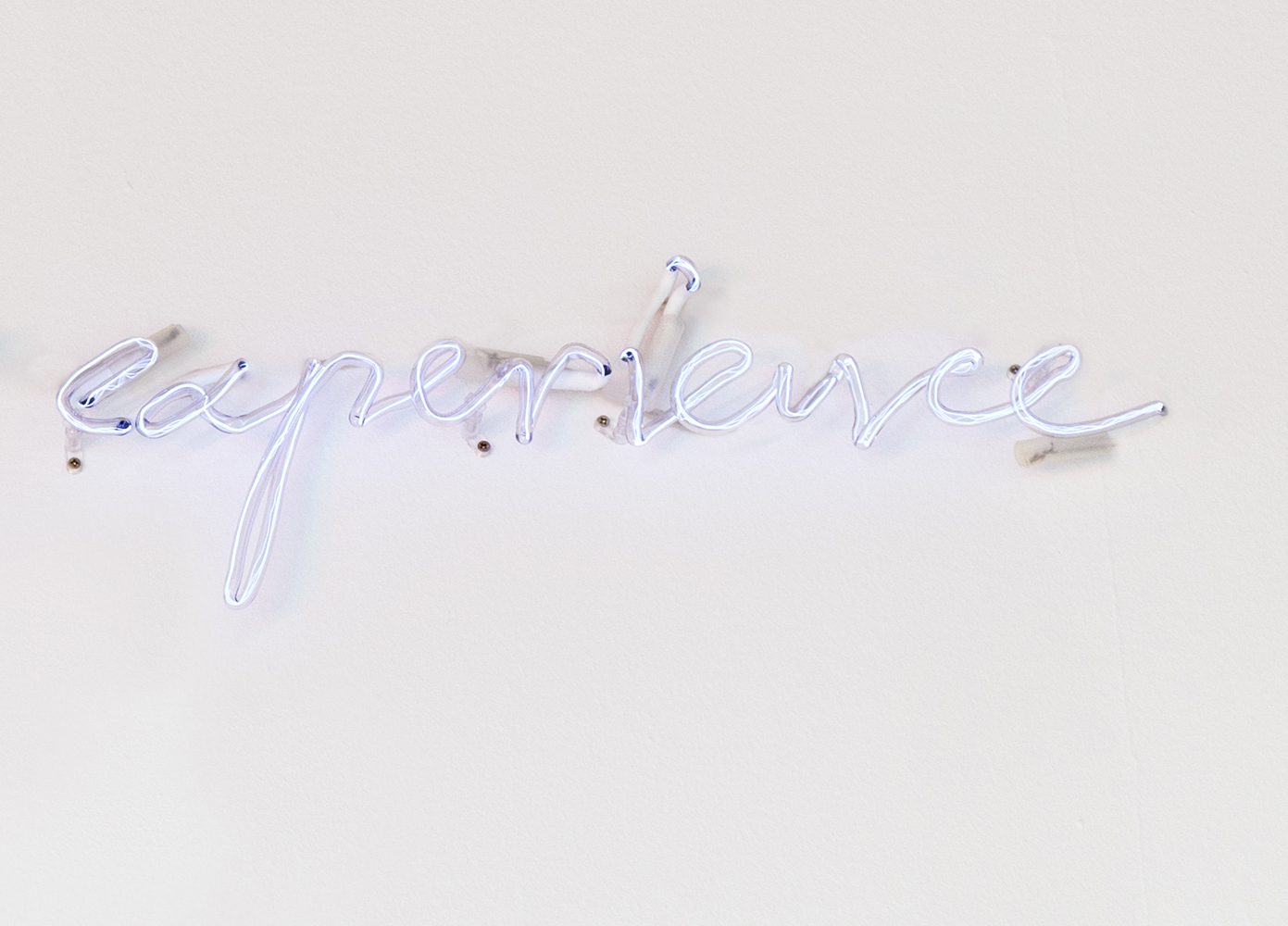Reading History
Reading History is a metaphorical investigation of the structures of history, artistic practices and in a sense, life of each individual. It provides structural frames, based on the construction of the ancient Chinese board game Weiqi, in English known as Go, to Martychowiec’s practice as a whole, suggesting possibility of a hermeneutic reading to his intricate symbolic narrative.
The arist writes ‘the stone itself is a nothing, but when placed on the board it becomes the representation of an idea. It is, indeed, so much alike to any gesture of an artist, where the medium is a mere representation of the concept. Once committed, the gesture remains and influences not only what precedes it, but most importantly what follows.’
Upon creation of an idea (either within a game or an artistic practice) its meaning or significance might not be clear, neither to the spectator, nor its creator, and one might have to wait for what is to follow in order for the true meaning of the gesture to surface. Of course, there are these ‘moves’ in the game, or these artistic gestures or events in history, which are groundbreaking. They change the meaning of history and time, or they change the meaning of anything the artist has committed up to that time.
The structure of Go, as mentioned, being so alike to that of history, provides an interesting parallel. For those knowing nothing of the game’s structure, the large-format photographs of the chosen moments of historical games, mean no more than geometrical compositions. This aesthetic layer is important because it has always been inseparable from art (for history has taught us rejection of any aesthetics, like in the case of minimalism, leads only to creation of new aesthetics). But those who know of the game, or even more so, the ones who are masters of it, are capable of reading far more from that one simple geometrical composition: they might be able to estimate its placement on the timeline of history, and tell about emotions or approach of those who played it, they might be able to, with some degree of error, reconstruct the order in which the stones were placed, and then, of course, make realistic guesses of what followed and what was the game’s result. This can be said equally about historians and about those who are learnt to read cultural tropes, symbols and relics.
The project divides into different serial elements, among other objects, they create sub-series of:
actual full reenactments of historical games (e.g. Reading History 2016-1846), which are developed on a wooden board throughout the duration of exhibitions and influence the context, meaning and framework of all the works of art around them. That means either the symbolic gestures on the board become representatives of specific artistic gestures within the artist’s practice or the course of the exhibition. Moreover, the board itself functions as a symbol of history – ‘board of history’. A historical game is re-enacted rather than simply presented, to emphasise the ‘reading’ or rather the act of interpretation as active, ongoing and ever contemporary.
large format photographs reenacting and depicting chosen moments from games in Go history (e.g. Reading History #1 (2018-196) )
large format photographs under the title Notes from the board depicting objects, images and notes are placed on the board within chosen moments of reenacted historical games. These elements are each time specifically connected either to other narratives developed by Martychowiec or to specific moments of history which are of relevance to these narratives.
and lastly, historical stones functioning similarly to framed relics, coming under the title Naming history. Comparing to the other cycles within this project, the approach here is different. Each physical stone, contains within itself a compilation of ideas it was used to represent as games were played with it throughout its ‘life’. It is impossible to know the games it was used in, but it is possible to subject it to the process of mythologisation. Thus, the selected stones are individualised and assigned meaning in a twofold fashion: by ‘placing’ them in the context of a historical game (saying such stone was used by such player, at such time, playing such game) and the context of history (assigning a specific historical event to it). The twofold contextualisation is determined by either an artistic decision or an artistically developed system; together, both of them complete the act of the object’s aestheticisation. Interpreting history through an artistic process has a mythological capacity, and in this case, results in neither archival nor archaeological-like objects. Instead, it develops a relic like aura around these stones-turned-readymades. The ‘aura’ is constituted not only through the stone’s pre-work-of-art ‘past’ but also through the specific roles it takes within the following exhibition context (as a work of art). The history grows on top of it, even though the foundation might be an artistic fabrication. Such is the nature of the myth.
Reading history 2016-1846
(2016) re-enactment of a historical game [Go board, slate and clamshell stones]
Alphabetically A.A.I.N.S.T.V.
(2010) 7 typescripts framed in glass on a shelf
Banana a banana
(2011) HD Video 00:08:43
Reading history
(2018) chromogenic print 130x140 cm
Looking for meaning in history
(2017) neon 26x200 cm
Notes from the board
(2018) chromogenic prints 90x97 cm
Naming history #1 (2017-1846): Death of Plutarch
(2017) arrangement of framed clamshell and slate Go stones
Naming history #2 (2017-1710): The Great Pyramid of the Sun
(2017) arrangement of framed clamshell and slate Go stones
Naming history #3 (2017-1861): Martha of Bethany Travels to Avignon
(2017) arrangement of framed clamshell and slate Go stones
Naming history #4 (2018-800): Time of Void
(2018) arrangement of framed clamshell and slate Go stones
The beginnings of history (1830)
(2021) neon 23x70 cm
Reading history 2022-1834 (How to stage history for success?)
(2022) re-enactment of a historical game [Go board, slate and clamshell stones]
The beginnings of history (1968)
(2021) neon 23x70 cm
The beginnings of history (1912)
(2022) neon 23x70 cm
The beginnings of history (1921)
(2022) neon 23x70 cm
history=experience
(2022) neon 24x100
